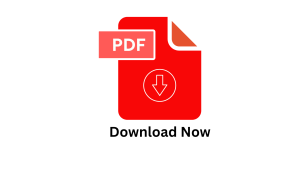Definition of MRP System
Materials Requirement Planning or MRP is a business system to plan for production and inventory control. Companies use material requirements-planning systems to estimate quantities of raw materials and schedule their deliveries.
MRP is designed to answer three questions:
- What items is needed?
- How many is needed?
- When are they needed?
MRP system plans and schedules for items depend on demand which consists of raw materials, components parts, and subassemblies. This system generates meaningful information to the management about their need for labor and material supplies which can help business improve their production efficiency.
Definition of MRP from different sources:
‘’Material Requirements Planning is a wide spread management tool which helps to control the inventory with the help of forward planning with the help of backward technique’’
(Ashokkumar P Rathod, Material requirements planning (MRP-I): An overview and methodology for successful implementation, 2020)
“Material Requirements Planning is a time-phased priority-planning technique that calculates material requirements and schedules supply to meet demand across all products and parts in one or more plants.”
(Vassilis Moustakis, 2000)
‘’MRP is a production planning and inventory control system used to manage manufacturing processes.‘’
(Wim Zg, Material Requirement Planning (MRP)
‘’A computer-based system designed to organize the timing and ordering of the dependent demand products. The demand for raw material and components of the final product are calculated by using the demand for the final product and determined how much and in what quantity to order from these components and raw material, considering the production and lead times and counting back from the delivery time of the product.’’
(Sagbansua,2010)
‘’MRP systems helped manufacturers ensure the availability of materials, components, and products for planned production and for customer delivery, as well as maintaining the lowest possible level of inventory.’’
(Volman et al., 1992)
‘’MRP was the earliest computerized information system for operations management and was the origin for today’s Enterprise Resources Planning (ERP) systems.’’
(Abdinnour-Helm et al., 2003)

History of MRP
The economic order quantity (EOQ), a reorder point type method applied in manufacturing and stock management before there is MRP exists. An improvement on EOQ model which is MRP is developed to streamline production planning and scheduling and able to manage orders for items according to demands. Material requirement planning was the earliest of the integrated information technology (IT) systems which target to improve business productivity by using computers and software technology. The first MRP system for inventory management debuts in the 1940s and 1950s. MRP systems used to be just applied to explore data from a bill of materials for a certain finished product into a production and purchasing plan for components. After that, MRP was improved to consist information feedback loops for production staff to edit and update system inputs as required.
A more advanced MRP II was developed by Oliver Wright and introduced in 1983. It has the additional features on master scheduling, rough-cut capacity planning, capacity requirements planning, SOP, and other concepts to the traditional MRP. MRP marked a great succeed as it dominated one-third of the American software industry by 1989.
Now, the MRP system is greatly advanced from its predecessors. Few years back, MRP system take more than half a day to complete a whole MRP process whereas now less than 5 minutes needed.
Material Requirements Planning (MRP) in Manufacturing
MRP is vital to the efficiency, effectiveness and profitability of a manufacturing. MRP helps business to maintain low inventory levels and keep up with the demand for products at the optimal cost and quality. By maintaining appropriate levels of inventory, they will also be able manufacturers better align their production with fluctuations in demand.
Companies need to manage types and quantities of materials they purchase, plan which products to manufacture and in what quantities and ensure that they are able to meet customer demands all at the lowest possible cost.
MRP can also make the later stages of production, example assembly and packaging, proceed more smoothly and predictably by removing most of the uncertainty over inventory and minimizing the time managed.
MRP is useful in both discrete manufacturing, in which the final products are distinct items that can be counted — example bottles or automobiles — and process manufacturing, which results in bulk products, such as detergent, that can’t be separately counted or broken down into their constituent parts.
Values of MRP to Your Business
Materials requirements planning (MRP), is getting more and more common as many of companies have started adopting MRP systems for better production/ inventory control. By having a well-designed and well-managed MRP system can improve resources efficiency by reducing stocks levels by dropping the quantity in work-in-progress (WIP).
In an easier form, MRP can help ensure effective and efficient planning, releasing, and controlling of orders so that materials are able to arrive in time when needed.
Manage Orders
MRP gives you better production control by managing orders. Products can be viewed and scheduled in assembly lines. Raw materials needed for the production also can be defined with data shown which are a very important factors in manufacturing process.
MRP also allows you to have a flexibility to edit and adjust manufacturing orders according to the latest amendment. To speed up manufacturing process, utilization of barcodes is available in MRP. Function of serial number scanning, increase the efficiency of works and reduce human mistakes.

Schedule and plan
By using MRP, the operators will have a clear insight of the whole production, easily access to all available resources and the ability to plan ahead of the production. The raw materials consumption and availability stocks can be keep track accurately for all production. Bill of materials will be on fingertips, optimization of the usage of labor and equipment, improve labor productivity and reduced inventory costs allowcompanies offer more competitive product pricing.

Reports Tracking
With a clear tracking report, you will always get up to date information of each production process and never lose track of it. Traceability in the report of the exact components and materials are used in production.
Costing of the manufacturing orders will be analyzed and keep track in the report for each order based on the operations and material costs. The tracking of overall equipment effectiveness (OEE) will give you an overview on how to improve the overall productivity as well. This will reduce customer lead times to improve customer satisfaction.
.

Getting started with Epicor Kinetic/ ERP System
As the transformation, ERP is a better version of MRP which consists more functions such as supply chain management and financial management. With an integrated system, your business able to improve overall efficiency and increase profitability.
Epicor Kinetic/ ERP is a business management system with better user-friendly user interface, fully integrated platform, flexible dashboard controls, and yet still affordable pricing. To provide users with state-of-the-art functionalities and features which adopted the best practices of the MRP system. The constant improvement and evolution had also lead to cloud solutions that lighten the initial burden of business owners.
Again, we believe your businesses deserve the best of quality when it comes to the ERP system. If you agree, make the effort and join us right away.

POWER